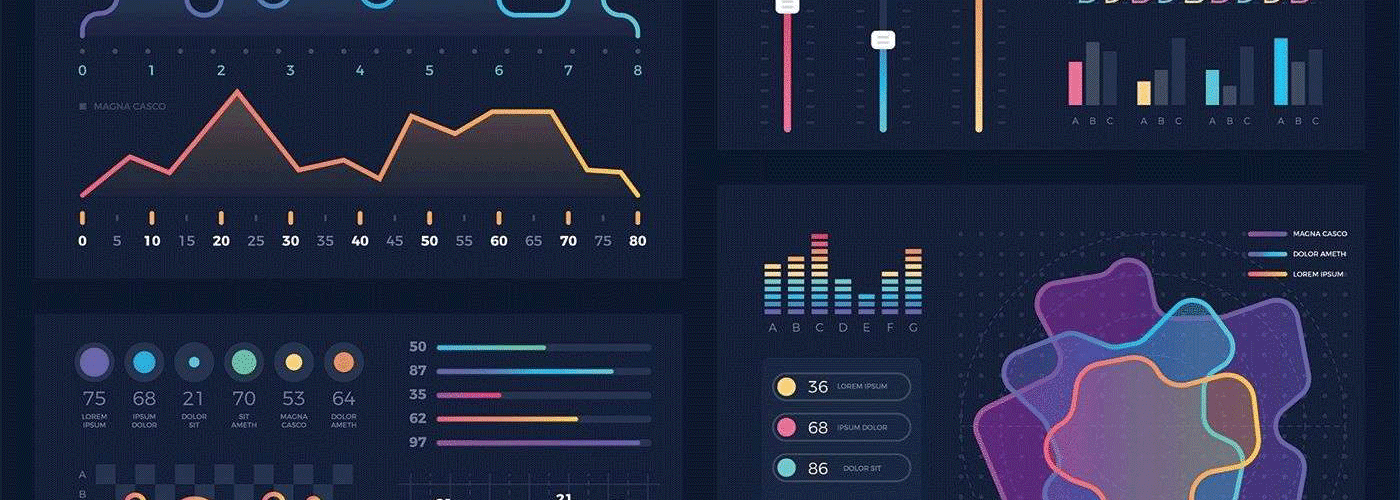What is Data Visualization?
Why Data Visualization is Important in Business Intelligence
For most companies, data collection is the cornerstone of business intelligence initiatives. Communicating the trends hidden within complex data sets is crucial. Data visualization accomplishes this by transforming raw information into actionable insights.
What is Data Visualization?
Data visualization is both an art and a science. It involves the representation of information in a graphical or visual format. Data visualization goes beyond traditional tables and spreadsheets, using charts, graphs, maps, and interactive elements to present results in an easy-to-comprehend way. The primary goal of this technique is to simplify complex data sets, making them accessible and insightful for both technical and non-technical users.
As an art form, this sort of visualization involves creativity in design, color selection, and style. The aesthetics are carefully chosen to tell a compelling story. Still, data visualization adheres to scientific principles by ensuring accuracy, consistency, and meaningful representation of information.
Though tables and spreadsheets have their place, they are poorly equipped to illuminate trends to the untrained eye. Effective data visualization converts raw numbers into visual elements that allow for a more immediate and intuitive understanding.
Data visualization excels at bridging the gap between technical and non-technical audiences. It allows data professionals to communicate their findings effectively to decision-makers, executives, and stakeholders who may not possess in-depth analytical skills. This democratization of information empowers a broader range of individuals within an organization to make data-informed decisions.
Interactive Nature of Visualizations
Today’s interactive visualizations allow users to engage dynamically and meaningfully with their data. Interactivity is a powerful tool for the exploration and understanding of information.
Suppose you have a line chart displaying sales data for your company over the past year. You can access the specific sales figures for a particular month or even a single day with a click or hover. This ability to drill deeper into data points empowers users to scrutinize details, identify trends, and make informed decisions based on granular information.
Usability is the key to making interactive data visualizations effective. Users should feel empowered, not overwhelmed, as they explore. To avoid overwhelming your users, you should use progressive disclosure techniques. Start with an overview and allow users to dive deeper as their curiosity guides them. This approach respects both novices and experts, tailoring the experience.
In addition, visualizations should be designed to adapt to various devices and screen sizes. A responsive design ensures that users can explore data on desktops, tablets, and smartphones, providing a consistent experience across platforms.
Why Data Visualization Matters in Business Intelligence
At its core, data visualization is about simplification. Properly using graphical representations of this information helps users quickly grasp patterns, trends, and anomalies, allowing for more informed decision-making.
Visualizations are written in a universal language that transcends barriers. They make it easier to convey complex information to various organizational stakeholders, promoting better collaboration and understanding.
When it comes to data, speed matters. Effective visualizations allow decision-makers to quickly identify opportunities or issues, helping them respond promptly to changing market conditions. In addition, interactive visualizations enable users to explore data intuitively. With the ability to drill down and filter data dynamically, users can uncover insights that might otherwise remain hidden.
BI Visualization Tools
To harness the power of their data, companies rely on a variety of BI visualization tools. Some popular options include:
- Tableau: Known for its user-friendly interface and powerful visualization capabilities, Tableau offers a wide range of chart types and integrations.
- Power BI: Microsoft’s Power BI allows users to create interactive reports and dashboards. It connects with other Microsoft products, making it an excellent choice for organizations in that software ecosystem.
- QlikView/Qlik Sense: QlikView and Qlik Sense use an associative model that enables users to explore relationships easily. These tools provide data visualization and self-service analytics capabilities.
- D3.js: For more advanced users and developers, D3.js is a JavaScript library that offers tremendous customization options for BI visualizations.
Data Visualization Strategy
To get the most out of their BI efforts, organizations should first develop a comprehensive strategy. Here are some things to consider:
- Define Your Objectives: What are you hoping to accomplish? Outline the goals and objectives of your efforts before you begin. What insights do you hope to gain? Who are the target users of the information you’re collecting?
- Select The Right Tools: Choose tools that align with your company’s needs and capabilities. Things to consider when choosing tools include data sources, in-house user expertise, and scalability of the applications.
- Use Accurate Inputs: When creating visualizations, verify that your inputs are clean, accurate, and well-organized. Data quality is essential.
- Be Purposeful: Create visualizations that serve a specific purpose. Avoid clutter and focus on including only the most critical information.
- Train Your Team: Provide training and support to your team to ensure they can properly interpret the visualizations you create.
Take Action with Data Visualization
Data visualization is much more than a decorative element of BI. Instead, it’s a crucial link between raw data and the actionable insights you need. By incorporating data visualization into your BI strategy, you can make strides toward unleashing the full potential of your information assets.
If you’re grappling with the complexities of your data, look no further than Dymeng for assistance. We know how to help you unravel the underlying patterns and trends concealed within your data.
Our expertise extends to optimizing the insights derived from your business intelligence, regardless of whether the data originates from a sophisticated warehouse, a data mart, or an analytics cube. We can help you build a narrative from the raw data you’ve collected, empowering better decision-making and strategic planning. Contact us today!


